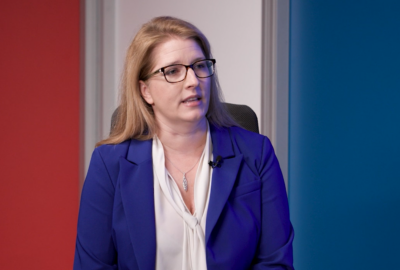It’s the start of a new year and a good time to recommit to those long-term digital transformation efforts — underway in nearly every federal agency.
“Collectively, the government’s technology efforts have the potential to improve the lives of 350 million people,” said Raymond Holder, vice president of digital growth at Maximus. “Digital technology and innovation — the impacts of modernization — are everywhere. They touch everyone.”
We asked Holder — who has spent two decades helping agencies use technology to innovate effectively, transform operations and improve lives — to share practical advice that federal technology leaders can act on right now to sustain momentum with their modernization efforts despite a challenging IT landscape.
He offered seven tips to help agencies expand their digital efforts despite increased security threats, limited budget and aging legacy systems that are mission critical. Holder said an iterative approach will ensure agencies can overcome these challenges against a backdrop in which nearly 80% of the federal IT budget goes to maintaining legacy systems, many of which were built more than 20 years ago.
“One point that I think is underappreciated or overlooked by many is the risk inherent in the status quo,” Holder said.
He shared that’s why he often says when talking with agency leaders and chief information officers, “Let’s take a look at the risks inherent in that legacy system, and let’s fix some of those first because that usually helps get the ball moving in terms of ways to modernize.”
Practical modernization Tip 1: Emphasize CX
Holder said at the top of his list is focusing on projects that can improve customer experience, even in small ways and whether the customer is internal or external.
“Where there are pain points, that’s usually an area where you can get alignment to modernize and find the budget and the resources to actually make a difference,” he advised.
Plus, the federal mandate to improve customer service in Executive Order 14058 adds more impetus to help such projects move forward. “There’s a relentless focus on improving that customer experience,” Holder said. “There are 38 high-impact service providers. These agencies are really driving innovation because there’s a commitment and a mandate to improve that experience.”
Practical modernization Tip 2: Embrace change management
Technology innovations affect the people who will use them, Holder was quick to note. Reinventing policies and processes therefore are a critical part of moving to modern digital platforms.
How will the changes affect people’s jobs? What workflow changes will be necessary? Are policy updates needed? Even if a proposed change will streamline operations and give staff more time to spend on core mission work, it is critical to make sure everyone is prepared for the change, Holder said.
“Where we’ve seen the most success is when you’ve got a leadership team that creates a communication approach and does a lot of the change management,” he said. “Ultimately, the majority of digital modernization successes are because the result of effective change management as much as the technology.”
Practical modernization Tip 3: Ride the mandates wave
Although mandates such as zero trust, cloud, CX and more can seem overwhelming, there’s also a benefit, Holder said. They help make change possible and make adoption easier. It’s something that CIOs often tell him.
“If you talk to most of the federal CIOs, many of them will tell you that these mandates are actually drivers of change. They cause people to rethink how they put solutions together and how they manage their systems,” he said. “To the degree that the mandates and executive orders cause people to rethink how things can be done more securely and how things can be done in a way that satisfies and improves the customer experience, that’s a great thing.”
Practical modernization Tip 4: Take one system at a time
Cloud has been an enabler in letting agencies modernize at a reasonable pace and making continued progress forward, Holder said. If an agency has a 30- or 40-year-old legacy system, the prospect of modernizing it all is daunting, he said.
“There are ways you can break off parts and take an informed modernization approach, a real world approach, so that you can keep the system available and running, and still modernize and improve the customer experience one bit at a time.”
Holder pointed to a project that Maximus worked on with a large regulatory agency and its financial filing database. “It can’t be down for more than 2 minutes a year,” he said. “We were able to integrate new solutions and modernize over time. Over the years, that legacy application footprint has been decreasing and the modernized portions have been increasing and improving customer satisfaction.”
Maximus developed a continuous integration and continuous delivery pipeline, enabling that particular agency to iteratively modernize system features.
“We reduced the production deployment time from 40 hours to 45 minutes. It’s just been a period of months, and we’ve had 140 releases,” Holder said, adding that by upgrading the legacy database, the new agile development approach has saved the government $2 million a year in support costs.
Practical modernization Tip 5: Prioritize against budget
“People always ask, is there enough money? And the answer is no, right? There’s never enough to do everything that you have to do,” he said.
Instead, where he sees success is when people align clarity of mission with an innovation agenda. “They’ve got a priority list of things that they’d like to do and then they find the smallest portion that they can break off and experiment on that,” Holder said. “That allows them to find out what will work, what won’t work and to continually make progress. And progress is the most important thing.”
Practical modernization Tip 6: Succeed, don’t fail, quickly
Ultimately, modernization happens and takes hold through iteration, testing and experimentation, he said. “You need environments that allow you to do that securely — and in a bite-sized manner — so that when you find a solution that works, you can then scale that without taking a large risk.”
The iterations help speed an agency to success, Holder said, even if there are failures along the way.
“People say, ‘Oh, we need an environment to do iterations and experiments, so we can fail quickly. And I say, ‘No, you’re not trying to fail quickly, you’re trying to succeed quickly,’ ” he said. “If you’re going to experiment, it’s going to take several iterations to get that thing right. And you’ve got to have a safe environment where you’ve got real-world data, with mandated federal access, privacy and security controls baked in that allow you to experiment and iterate with government and contracted partners.”
Practical modernization Tip 7: Take advantage of contractors’ lessons learned
Finally, Holder recommends leaning on vendor partners for the experiences they have with other agencies and can share with yours.
“We’ve learned some lessons that we can apply from customers like the Centers for Disease Control and Prevention, IRS and Centers for Medicare & Medicaid Services that maybe can apply to another agency,” he said.
That’s free knowledge that agencies can and should take advantage of, Holder said. “The other thing that I always counsel agencies: Look to industry for innovation and for experimentation.”
Build on the knowledge and successes of others, he advised. “I always encourage government leaders and agencies, ‘You don’t have to go in alone.’ Reach out to agency partners, like Maximus, and take advantage of lessons learned that we have and the resources we’ve already invested — to help you iterate and experiment and improve your mission outcomes.”
Discover more about how to improve, secure and transform your federal operations in the Forward-Thinking Government series.
Copyright
© 2024 Federal News Network. All rights reserved. This website is not intended for users located within the European Economic Area.





